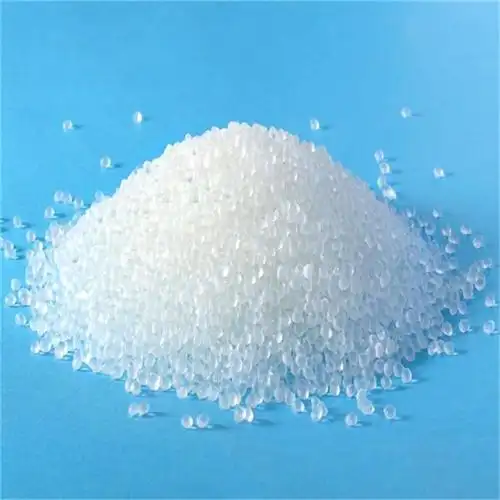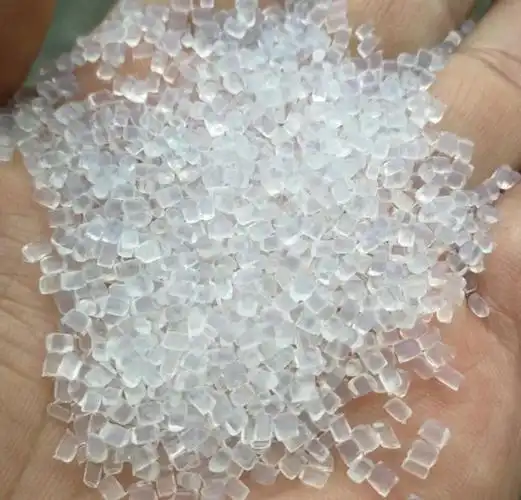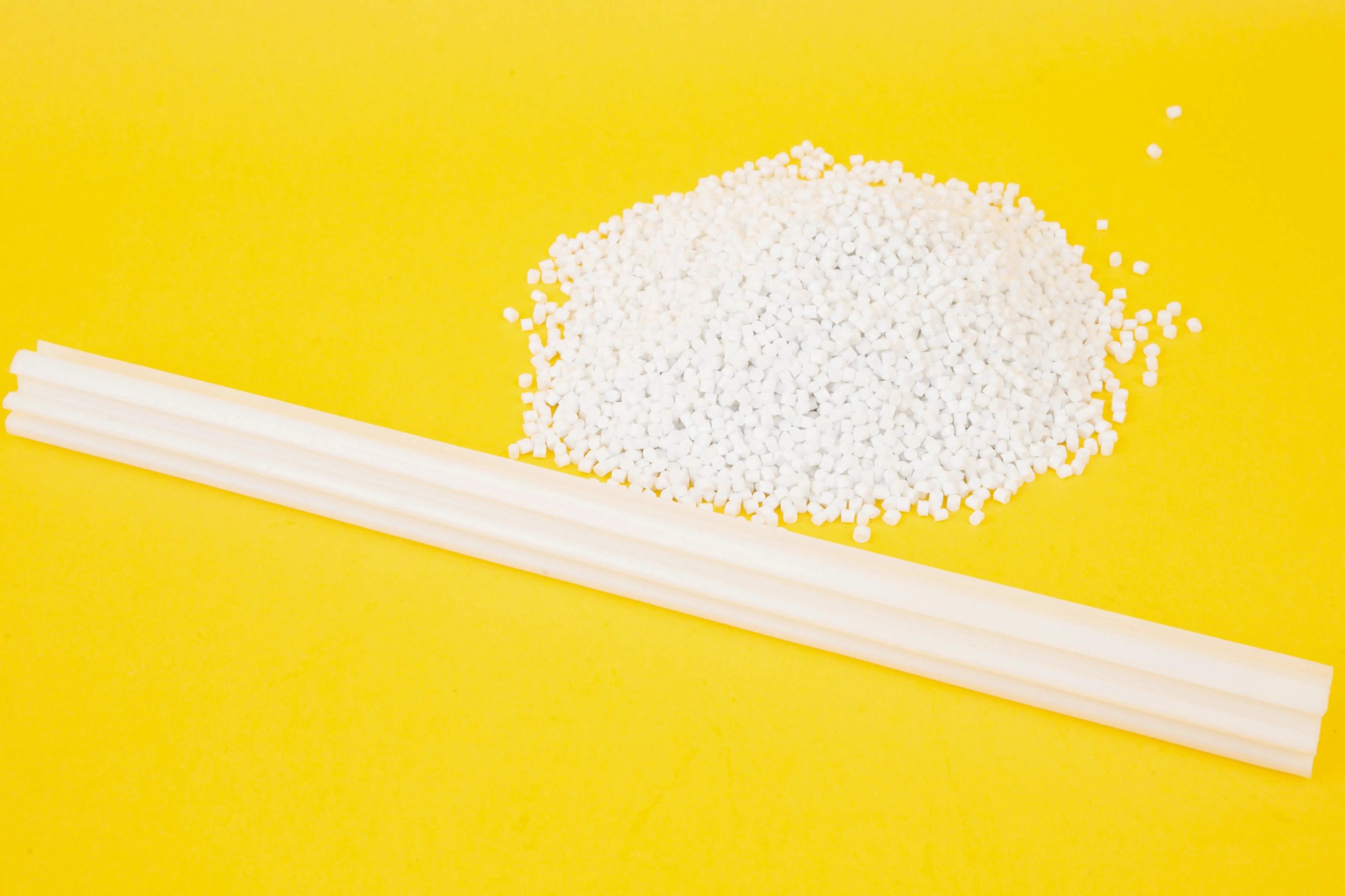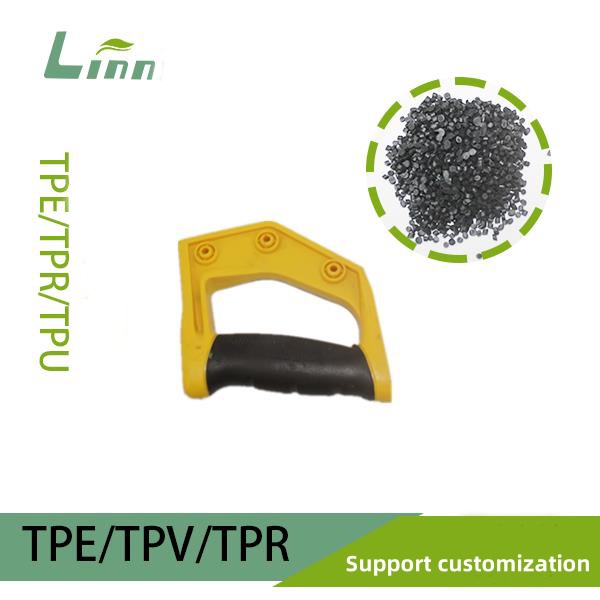As someone who has been deeply involved in the materials science industry for years, I’ve encountered countless questions about various polymers, with TPE (Thermoplastic Elastomer) being one of the most frequently asked about. Today, I’m excited to dive into the world of TPE, exploring its nature, properties, and addressing a common misconception: Is TPE really a hard material?

Understanding TPE: The Basics
Before we delve into the hardness aspect, let’s establish a solid foundation by understanding what TPE is. TPE, or Thermoplastic Elastomer, is a unique class of materials that combines the processing advantages of thermoplastics with the elastic properties of rubbers. This means that TPEs can be molded, extruded, or otherwise shaped like plastics, yet they exhibit rubber-like flexibility and resilience at room temperature.
The Composition of TPE
TPEs are typically copolymers or a physical blend of polymers, consisting of a hard segment (usually a thermoplastic, such as polypropylene or polystyrene) and a soft segment (often a rubber, like butadiene or isoprene). The interplay between these segments gives TPEs their characteristic properties, allowing them to be tailored to specific applications by adjusting the ratio and type of segments used.
Types of TPE
There are several types of TPEs, each with its own set of properties and applications. Here’s a brief overview of the most common ones:
| Type of TPE | Key Characteristics | Common Applications |
|---|---|---|
| Styrenic TPE (TPE-S) | Good processability, excellent surface finish, moderate cost | Consumer goods, toys, footwear, automotive interiors |
| Thermoplastic Polyolefin (TPO) | Excellent weather resistance, good impact strength | Automotive exterior parts, wire and cable, construction |
| Thermoplastic Vulcanizate (TPV) | High-temperature resistance, good chemical resistance | Automotive seals, gaskets, hoses, industrial components |
| Thermoplastic Polyurethane (TPU) | High abrasion resistance, excellent flexibility, good oil resistance | Sports equipment, footwear, medical devices, industrial hoses |
Note: The above table provides a simplified overview. Each type of TPE can have numerous variations and grades with different properties.
Debunking the Hardness Myth: Is TPE Really Hard?
Now, let’s address the burning question: Is TPE really a hard material? The answer is not straightforward, as TPEs can range from very soft to relatively hard, depending on their composition and intended application.
The Hardness Scale of TPE
Hardness is a measure of a material’s resistance to indentation or scratching and is typically quantified using the Shore hardness scale. There are two main scales used for TPEs: Shore A and Shore D.
Shore A: This scale is used for softer materials, such as rubbers and some TPEs. It ranges from 0 (very soft, like a gel) to 100 (hard, approaching the hardness of some plastics).
Shore D: This scale is used for harder materials, including some TPEs and rigid plastics. It ranges from 0 (soft) to 100 (very hard).
Most TPEs fall within the Shore A range, with hardness values typically between 30A and 90A. However, some specialized TPEs, particularly those in the TPV and TPU families, can have hardness values that extend into the Shore D range, making them relatively hard compared to traditional rubbers.

Factors Influencing TPE Hardness
Several factors can influence the hardness of a TPE material:
Composition: The ratio of hard to soft segments in a TPE significantly impacts its hardness. Increasing the proportion of hard segments generally results in a harder material, while more soft segments yield a softer TPE.
Type of Segments: The specific types of polymers used as hard and soft segments also play a role. For example, TPU, which often uses polyester or polyether polyols as soft segments and diisocyanates as hard segments, can be formulated to have a wide range of hardness values.
Additives and Fillers: The addition of fillers, plasticizers, or other additives can modify the hardness of TPEs. For instance, adding a plasticizer can soften a TPE, while certain fillers can increase its hardness.
Processing Conditions: The processing conditions, such as temperature, pressure, and cooling rate, can also affect the hardness of TPEs. Proper control of these parameters is essential to achieving the desired hardness and other properties.
Real-World Examples of TPE Hardness
To better understand the range of hardness in TPEs, let’s look at some real-world examples:
Soft TPE Applications
Consumer Goods: Many everyday items, such as toothbrush handles, kitchen utensils, and phone cases, are made from soft TPEs with hardness values around 40A to 60A. These materials provide a comfortable grip and a pleasant tactile feel.
Medical Devices: Soft TPEs are also widely used in medical devices, such as catheters, tubing, and seals, due to their biocompatibility, flexibility, and ability to be sterilized. These TPEs typically have hardness values in the range of 30A to 50A.
Medium-Hard TPE Applications
Automotive Interiors: TPEs with medium hardness (around 60A to 80A) are commonly used in automotive interiors for components like dashboard trim, door panels, and center consoles. These materials offer a balance of durability, scratch resistance, and a premium feel.
Footwear: Many athletic shoes and casual footwear incorporate TPEs with medium hardness for their midsoles and outsoles. These TPEs provide cushioning, support, and durability, with hardness values typically ranging from 60A to 75A.

Hard TPE Applications
Automotive Exteriors: Some TPEs, particularly TPVs, are formulated to have high hardness (above 80A, even extending into the Shore D range) for use in automotive exterior parts, such as bumpers, grilles, and side mirrors. These materials offer excellent impact resistance, weatherability, and paintability.
Industrial Components: Hard TPEs are also used in various industrial components, such as seals, gaskets, and hoses, where high strength, chemical resistance, and durability are required. These TPEs can have hardness values well into the Shore D range, making them comparable to some rigid plastics in terms of hardness.
The Versatility of TPE: Beyond Hardness
While hardness is an important property of TPEs, it’s just one aspect of their remarkable versatility. TPEs offer a host of other benefits that make them ideal for a wide range of applications:
Flexibility and Resilience
TPEs are known for their excellent flexibility and resilience, allowing them to bend, stretch, and recover their shape without permanent deformation. This property is crucial for applications that require repeated flexing or impact resistance, such as hoses, seals, and sports equipment.
Processability
One of the key advantages of TPEs is their processability. Unlike traditional rubbers, which require vulcanization (a time-consuming and energy-intensive process), TPEs can be processed using standard thermoplastic techniques, such as injection molding, extrusion, and blow molding. This makes TPEs more cost-effective and efficient to produce, especially for high-volume applications.
Chemical Resistance
Many TPEs exhibit good chemical resistance, making them suitable for use in environments where exposure to oils, greases, solvents, or other chemicals is common. This property is particularly important in automotive, industrial, and medical applications, where materials must withstand harsh conditions without degrading.
Environmental Resistance
TPEs can be formulated to have excellent resistance to weathering, UV radiation, and ozone, ensuring their long-term performance in outdoor applications. This makes them ideal for automotive exteriors, construction materials, and outdoor furniture.
Recyclability
Unlike traditional rubbers, which are often difficult to recycle, TPEs can be recycled and reused, reducing waste and environmental impact. This property aligns with the growing demand for sustainable materials and circular economy practices.

Choosing the Right TPE for Your Application
With such a wide range of TPEs available, selecting the right material for your specific application can be a daunting task. Here are some key considerations to help guide your decision:
1. Define Your Requirements
Start by clearly defining the requirements of your application, including the desired hardness, flexibility, chemical resistance, temperature resistance, and any other specific properties. This will help narrow down the range of suitable TPEs.
2. Consider the Processing Method
Different TPEs are better suited for different processing methods. For example, some TPEs may flow better during injection molding, while others may be more suitable for extrusion. Consider the processing capabilities of your equipment and the ease of processing when selecting a TPE.
3. Evaluate Cost and Availability
Cost is always a factor in material selection. Compare the prices of different TPEs, taking into account their performance and the volume required for your application. Additionally, consider the availability of the material, as some specialized TPEs may have longer lead times or higher minimum order quantities.
4. Test and Validate
Before committing to a specific TPE, it’s essential to conduct thorough testing and validation. This includes evaluating the material’s performance under simulated use conditions, as well as its compatibility with other materials and processes in your application. Working closely with a reputable TPE supplier can provide valuable insights and support during this process.
Conclusion
In conclusion, TPE is a remarkably versatile class of materials that offers a wide range of hardness values, from very soft to relatively hard. Contrary to the common misconception, TPEs are not inherently hard; their hardness can be tailored to meet the specific requirements of diverse applications. Beyond hardness, TPEs excel in flexibility, resilience, processability, chemical resistance, environmental resistance, and recyclability, making them ideal for a multitude of industries and products.
As the demand for high-performance, sustainable materials continues to grow, TPEs are poised to play an increasingly important role in shaping the future of manufacturing and product design. Whether you’re a seasoned engineer or new to the world of polymers, understanding the properties and capabilities of TPEs can open up a world of possibilities for innovation and creativity.

Related Q&A
Q: Can TPEs be used in food contact applications?
A: Yes, many TPEs are formulated to be food-grade and comply with regulatory standards such as FDA (U.S. Food and Drug Administration) and EU (European Union) regulations for food contact materials. These TPEs are safe for use in applications where they may come into contact with food or beverages, such as kitchen utensils, food packaging, and beverage dispensers.
Q: How do TPEs compare to traditional rubbers in terms of performance?
A: TPEs offer several advantages over traditional rubbers, including better processability, shorter production cycles, and the ability to be recycled. In terms of performance, TPEs can match or exceed traditional rubbers in many aspects, such as flexibility, resilience, and chemical resistance. However, some specialized rubbers may still outperform TPEs in certain extreme conditions, such as very high temperatures or aggressive chemical environments.
Q: Are TPEs suitable for outdoor applications?
A: Yes, many TPEs are formulated to have excellent resistance to weathering, UV radiation, and ozone, making them suitable for outdoor applications. These TPEs can maintain their performance and appearance over long periods of exposure to the elements, making them ideal for automotive exteriors, construction materials, and outdoor furniture.
Q: Can TPEs be painted or coated?
A: Yes, some TPEs, particularly those with higher hardness values, can be painted or coated to enhance their appearance or provide additional protection. However, the paintability or coatability of a TPE depends on its surface energy and chemical composition. It’s essential to select a TPE that is compatible with the painting or coating process and to follow proper surface preparation and application techniques to ensure good adhesion and durability.
Q: What is the shelf life of TPE materials?
A: The shelf life of TPE materials can vary depending on the specific formulation, storage conditions, and packaging. In general, TPEs should be stored in a cool, dry place away from direct sunlight and heat sources to prevent degradation. When stored properly, most TPEs can have a shelf life of several years. However, it’s always a good practice to check the manufacturer’s recommendations for the specific TPE you are using.





